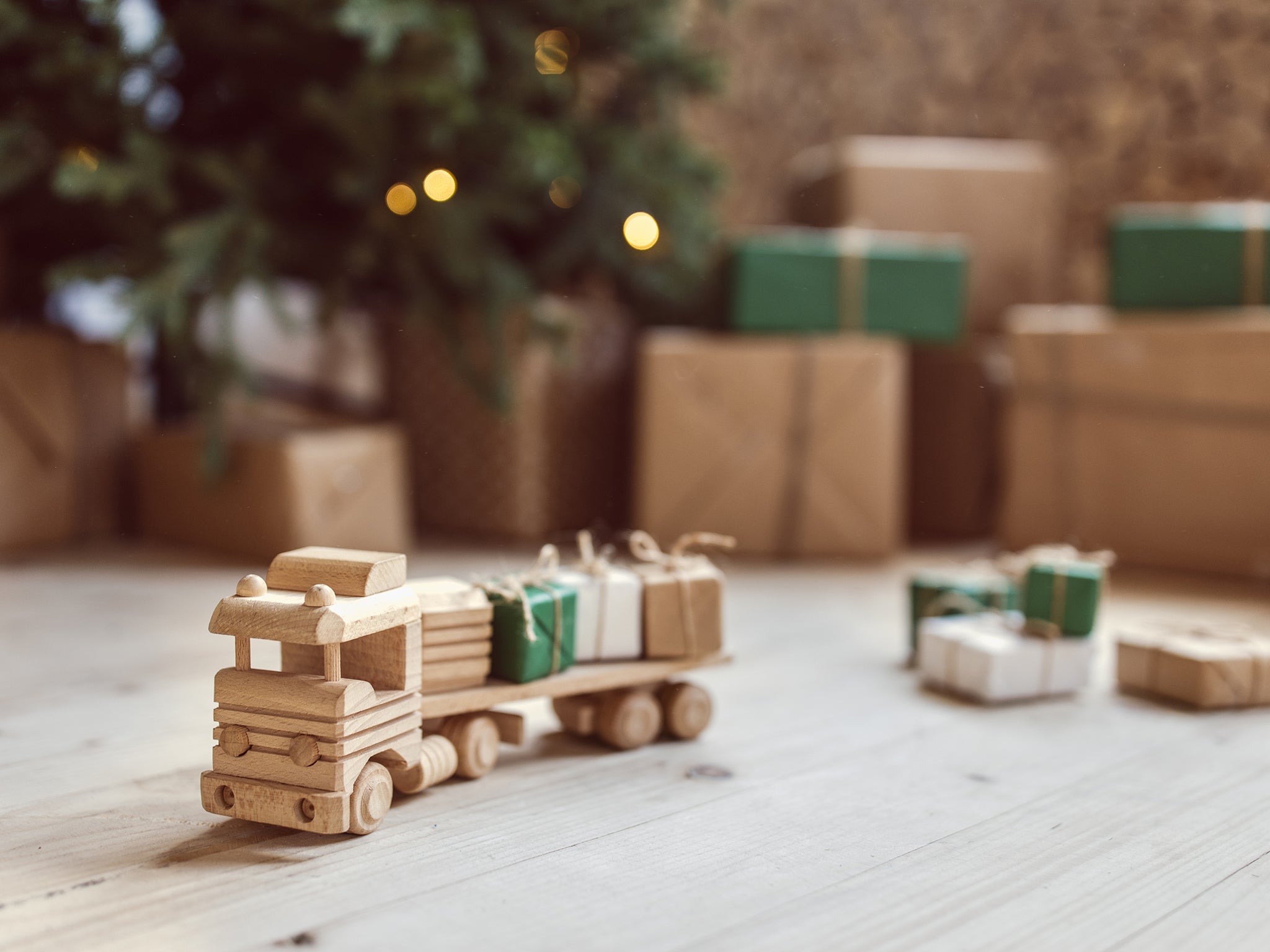Finding sustainable, plastic-free toys doesn’t have to cost the Earth
More and more toys are ending up in the landfill and this number sets to rise as another Christmas approaches. The key to stopping this crisis is to shop consciously, says Matthew Watkins

Think about the way plastic pollution has been reported in recent years and you’re probably picturing plastic packaging, films and microfibres. But Christmas brings a deluge of another relatively short-lived plastic product that has received a lot less attention – children’s toys.
Children’s toys form a large and growing global market worth $90.4bn in 2018. Unlike low weight packaging and film, toys often contain far larger quantities of high-quality virgin plastic material – and they usually last a lot longer than their owner’s interest, such is the rapid pace of child development.
We wanted to find out which toys are best for the planet, to help parents make a sustainable choice of gifts for their children at Christmas. Our research considered a wide range of children’s toys and compared high-value branded toys with those that were cheaper and unbranded.
By studying the life cycles of a range of children’s toys, we were able to determine their environmental impact and calculate how much energy goes into making and using each toy throughout its lifespan. We calculated the energy used to extract and process the raw materials, ship the product, deliver any power requirements such as batteries as well as energy that is lost, used or recovered through recycling or disposing of the toy at the end of its life.
We found that toys that are kept longer, resold or donated secondhand, have a lower yearly environmental impact overall, as this is likely to negate the manufacture and purchase of new toys. Toys that maintained their interest and relevance to children over time, had multiple uses or could be added to as part of a collection had the greatest potential for longer lifespans.
We also considered the secondhand prices of toys online and asked the opinions of secondhand retailers such as charity shops and parents and childcare workers. As you might expect, the secondhand value of a toy is greater for those that are initially more expensive. Higher-value branded products were more likely to be resold whereas cheaper alternatives were more likely to be sent to landfill or donated rather than sold.
Plastic pollution in UK rivers: In pictures
Show all 10So which toys were the most and least sustainable?
Secondhand toy story
Construction toys such as Lego and Meccano scored well because they can be used for longer and are suitable for children over a wider age range. These collections can be added to and customised, ensuring that they remain challenging and enjoyable as the child grows. Such toys have maintained their popularity over generations and so retain a good residual secondhand value and are more likely to be resold.
The least sustainable toys were typically those that contained electronics. These toys require larger amounts of energy during manufacture, and the electronics hamper their capacity to be recycled. Electronic toys also rely on batteries and tend to only be relevant to younger children, giving them a short lifespan. They are often relatively cheap when new, limiting their value in secondhand sales. Some electronic soft toys are particularly hard to clean, meaning that they are often discarded rather than donated.
For early development playthings, the parents and carers we interviewed strongly preferred wooden toys. Secondhand retailers said that wooden toys such as stacking rings and blocks retain relatively high secondhand values, and can have second – or even third – lives. But plastic toys shouldn’t necessarily be demonised – especially products like Lego. Good quality plastic toys are typically highly durable and are easily cleaned before resale.
Matthew Watkins is a senior lecturer in product design at Nottingham Trent University. This article first appears on The Conversation
Subscribe to Independent Premium to bookmark this article
Want to bookmark your favourite articles and stories to read or reference later? Start your Independent Premium subscription today.

Join our commenting forum
Join thought-provoking conversations, follow other Independent readers and see their replies